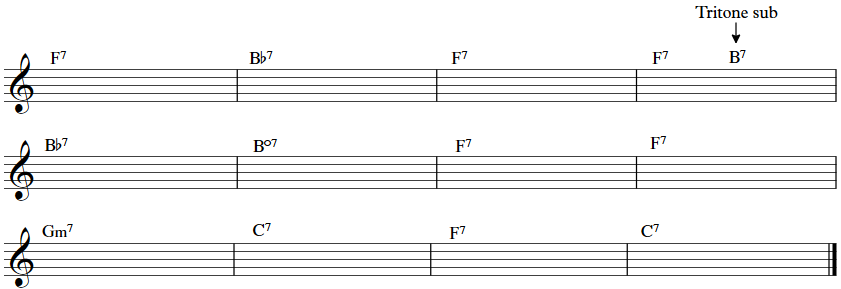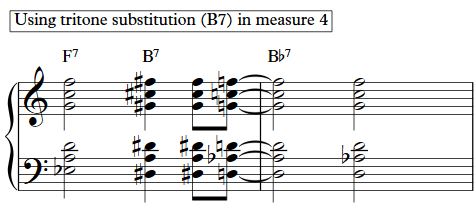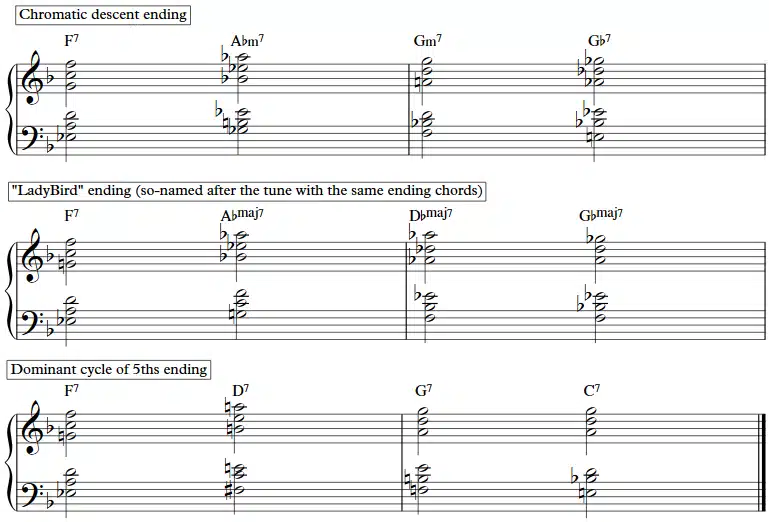In this article we’ll take a look at Tritone Substitutions plus two other ways to improve your blues playing. These three tips are presented here in a blues format, but they are equally valid in a jazz setting. After all, the blues form is frequently the template for jazz tunes. And rightfully so because the blues has everything! Major ii-V’s, minor ii-V’s, diminished chords, turnarounds, and many opportunities for chord substitutions and altered extensions. What we’re trying to say is that the language of the blues is the language of jazz. Let’s get started!
Improve Your Blues Playing Tip #1: Use Some Two-Handed Comping
Lots of players use the standard root, 3, 5, 7 spelling of dominant chords, either in root position or various inversions, when comping in a blues setting, such as the examples below.

There’s nothing inherently wrong with using any of these chords in your playing, but once you have them mastered it’s time to move on to some more demanding, challenging, and dynamic chord shapes. Taking a two-handed approach to comping usually means spelling a chord across both hands (as opposed to simply playing the same thing in both hands, which might better be described as “doubling up”).
Fourths voicings (sometimes called quartal voicings) are a great way to get a more mature, advanced jazz sound into your comping. Check it out:

Notice that the distance between each note in the above chords is an interval of a 4th (usually perfect 4ths, sometimes augmented 4ths). Try to work out 4ths voicings for all the chords in a 12-bar blues in a given key and comp in time with your metronome.
Tritone Substitutions – Tip #2: A Great Place to Use a Tritone Sub
Tritone substitutions can be incredibly effective in creating some tension in the blues form. The trick is knowing when to use them based on where they will sound best. Since the blues is (in its simplest form) just three dominant chords (the I, IV, and V chord), we could use a tritone sub on each chord. But that would be a little silly because it would effectively move us into a completely different key.
A great place to use a tritone sub in the blues from is in measure 4 – either the whole measure or just beats 3 and 4.

The result is that we hear a half-step resolution (from ‘B’ to ‘Bb’) when moving from measure 4 to 5. Try using the quartal voicings as shown below.

When soloing over this chord, try using a B mixolydian scale (with a raised 4th – i.e., ‘F’ instead of ‘E’. This scale is sometimes called a “lydian dominant” scale).

Improve Your Blues Playing Tip #3: Learn a Few Different Turnaround Endings
We all know the standard “ii-V” turnaround at the end of the 12-bar blues form. But there are some other turnarounds that players commonly use. Being familiar with some other turnaround endings will help you create some interest and variety in your blues playing, as well as help you identify these ending (so you can quickly jump in) if you hear them on a jam session.

